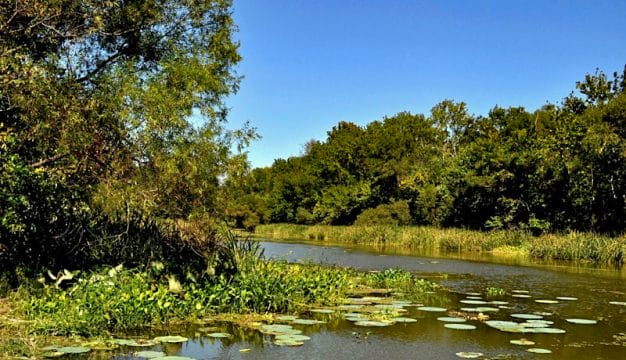Tuscaloosa
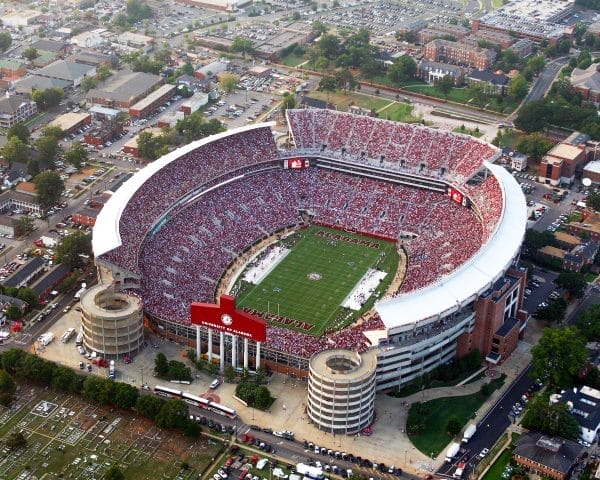 Bryant-Denny Stadium
Located in west-central Alabama along the fall line and the Black Warrior River, the city of Tuscaloosa is the state’s fifth most populous city and is the county seat of Tuscaloosa County. The town is named after Tuskaloosa, leader of the Mississippian town of Mabila (also known as Mauvila) who was executed by Spanish explorer Hernando de Soto’s men in 1540. Tuscaloosa served as the state’s capital from 1826 to 1846 and has been home to the University of Alabama since 1831. Tuscaloosa was known as “The Oak City” and “The Druid City” (after an ancient Celtic people who worshipped oaks) in its early years because huge water oak trees lined the downtown streets. The city of Tuscaloosa is now the hub for West Alabama industry and commerce, anchored by the sprawling nearby Mercedes-Benz plant. Tuscaloosa has a mayor-council form of government.
Bryant-Denny Stadium
Located in west-central Alabama along the fall line and the Black Warrior River, the city of Tuscaloosa is the state’s fifth most populous city and is the county seat of Tuscaloosa County. The town is named after Tuskaloosa, leader of the Mississippian town of Mabila (also known as Mauvila) who was executed by Spanish explorer Hernando de Soto’s men in 1540. Tuscaloosa served as the state’s capital from 1826 to 1846 and has been home to the University of Alabama since 1831. Tuscaloosa was known as “The Oak City” and “The Druid City” (after an ancient Celtic people who worshipped oaks) in its early years because huge water oak trees lined the downtown streets. The city of Tuscaloosa is now the hub for West Alabama industry and commerce, anchored by the sprawling nearby Mercedes-Benz plant. Tuscaloosa has a mayor-council form of government.
History
The site of present-day Tuscaloosa was inhabited at various times by local Native American peoples since at least the sixteenth century. The first white settler in what is now Tuscaloosa was Thomas York, who arrived with his family in 1816. As other settlers from Virginia, the Carolinas, and Georgia moved to the area by way of former Indian trails, the city of Tuscaloosa was incorporated and made the county seat on December 13, 1819, a day before Alabama was admitted to the Union. A delay in the laying out of Tuscaloosa resulted in the removal of the county seat just a few miles to the west to New Town in 1822. By 1826, however, New Town had been incorporated into Tuscaloosa, thus enabling Tuscaloosa to regain its position as county seat.
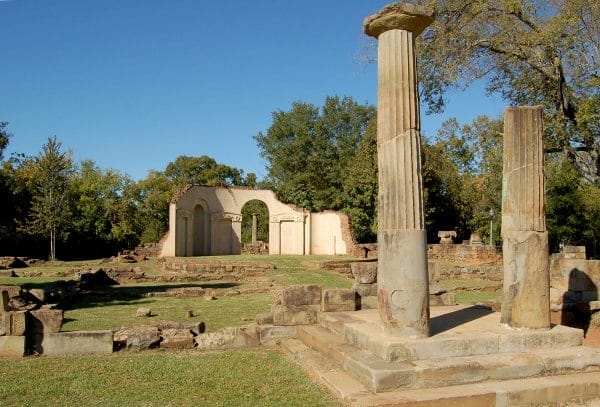 Tuscaloosa Capital
In 1826, Tuscaloosa became the state capital when the state legislature voted to move the seat of government from Cahaba. Tuscaloosa served as the capital until 1846, when a population shift to the east caused the legislature to move the capital to Montgomery. Before it lost its status as the state capital, Tuscaloosa gained another important state institution when the University of Alabama, chartered by the legislature as the official state university in 1820, greeted its first students in 1831. In the early 1840s, Tuscaloosa suffered a major setback when many of the city’s original structures were destroyed by a severe tornado. The city began its recovery with the 1859 establishment of yet another state institution: the Alabama Insane Hospital (renamed Bryce Hospital in 1900 to honor its first superintendent, Peter Bryce).
Tuscaloosa Capital
In 1826, Tuscaloosa became the state capital when the state legislature voted to move the seat of government from Cahaba. Tuscaloosa served as the capital until 1846, when a population shift to the east caused the legislature to move the capital to Montgomery. Before it lost its status as the state capital, Tuscaloosa gained another important state institution when the University of Alabama, chartered by the legislature as the official state university in 1820, greeted its first students in 1831. In the early 1840s, Tuscaloosa suffered a major setback when many of the city’s original structures were destroyed by a severe tornado. The city began its recovery with the 1859 establishment of yet another state institution: the Alabama Insane Hospital (renamed Bryce Hospital in 1900 to honor its first superintendent, Peter Bryce).
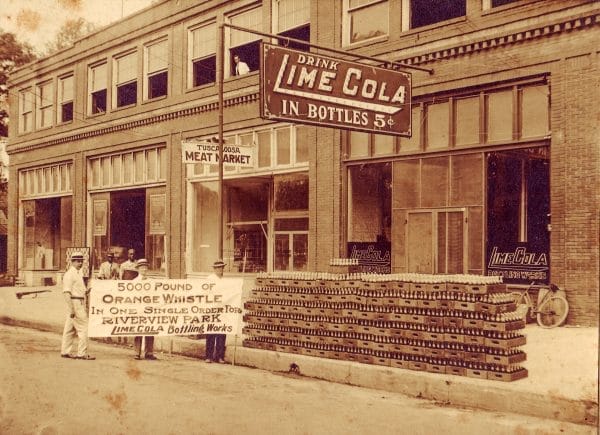 Downtown Tuscaloosa, 1917
Like most of Alabama, Tuscaloosa escaped the ravages of the Civil War until Union Maj. Gen. James H. Wilson’s raid through Alabama. Although the main focus of the expedition was Alabama’s foundries and arsenals in Selma, Wilson detached a brigade under Gen. John T. Croxton and sent them to burn the University of Alabama because it had been training militia and Confederate troops. After overcoming several groups of young university cadets, Croxton’s forces burned most of the university’s public buildings, including its library.
Downtown Tuscaloosa, 1917
Like most of Alabama, Tuscaloosa escaped the ravages of the Civil War until Union Maj. Gen. James H. Wilson’s raid through Alabama. Although the main focus of the expedition was Alabama’s foundries and arsenals in Selma, Wilson detached a brigade under Gen. John T. Croxton and sent them to burn the University of Alabama because it had been training militia and Confederate troops. After overcoming several groups of young university cadets, Croxton’s forces burned most of the university’s public buildings, including its library.
During the 1960s, Tuscaloosa was the site of a violent attack by police on civil rights protestors at the First African Baptist Church. The event was the culmination of the Tuscaloosa Campaign for integrating the city, which began on March 8, 1964, under the guidance of Martin Luther King Jr. The Tuscaloosa Citizens for Action Committee held mass meetings at the church throughout the spring, and on June 9, approximately 600 people met at the church to march. They were attacked by dozens of police officers and some 200 white citizens, and 100 protestors were arrested and 33 were admitted to the hospital on what became known as Bloody Tuesday.
On April 27, 2011, a massive storm, causing numerous powerful tornadoes, struck the southeastern United States. More than 250 people were killed in Alabama, including 39 people in Tuscaloosa and the surrounding communities.
Economic Development
Tuscaloosa did not recover from the physical and economic ruin brought by the Civil War until the early twentieth century. By then, it had become a leading population and educational center in the state. Of great assistance to Tuscaloosa’s recovery was a new system of locks and dams on the Black Warrior River, constructed by the U.S. Army Corps of Engineers in the 1890s, that provided the city with an outlet to Mobile‘s seaport. As the University of Alabama and the mental-healthcare facilities associated with Bryce Hospital continued to expand, Tuscaloosa prospered into the twentieth century. In the latter part of the century, Tuscaloosa attracted such large manufacturing firms as Michelin and JVC before being chosen by Mercedes-Benz in 1993 to launch Alabama into the automotive industry.
Demographics
According to 2020 Census estimates, Tuscaloosa recorded a population of 100,633. Of that total, was 50.9 percent identified themselves as white, 44.1 as African American, 2.8 percent as Hispanic, 2.5 percent as Asian, 1.5 percent as two or more races, and 0.3 percent as American Indian. The city’s median household income was $44,507, and per capita income was $26,891.
Employment
According to 2020 Census estimates, the workforce in Tuscaloosa was divided among the following industrial categories:
- Educational services, and health care and social assistance (31.4 percent)
- Manufacturing (14.3 percent)
- Retail trade (12.8 percent)
- Arts, entertainment, recreation, accommodation, and food services (12.3 percent)
- Professional, scientific, management, and administrative and waste management services (8.3 percent)
- Finance, insurance, and real estate, rental, and leasing (4.4 percent)
- Construction (4.1 percent)
- Transportation and warehousing and utilities (3.7 percent)
- Other services, except public administration (3.4 percent)
- Public administration (2.1 percent)
- Wholesale trade (1.5 percent)
- Information (1.1 percent)
- Agriculture, forestry, fishing and hunting, and extractive (0.7 percent)
Education
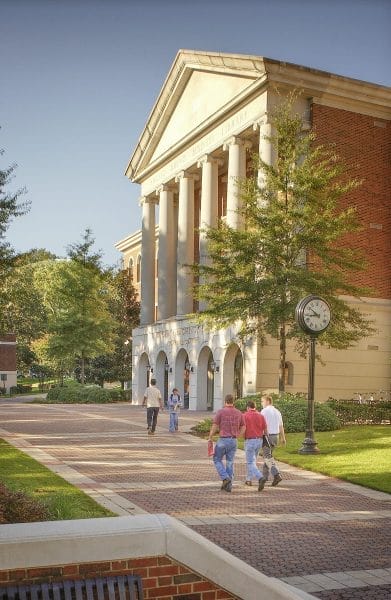 University of Alabama Bruno Business Library
The Tuscaloosa city school system consists of 12 elementary schools, five middle schools, and five high schools. Tuscaloosa remains the home for the University of Alabama (UA), the state’s first college and largest institution of higher education. Tuscaloosa is also home to historically black Stillman College, a four-year liberal-arts institution, as well as to Shelton State Community College, a two-year college providing educational opportunities in both academic and technical career fields.
University of Alabama Bruno Business Library
The Tuscaloosa city school system consists of 12 elementary schools, five middle schools, and five high schools. Tuscaloosa remains the home for the University of Alabama (UA), the state’s first college and largest institution of higher education. Tuscaloosa is also home to historically black Stillman College, a four-year liberal-arts institution, as well as to Shelton State Community College, a two-year college providing educational opportunities in both academic and technical career fields.
Transportation
Tuscaloosa is serviced by a network of highways and roadways, including Interstate 20/59; Interstate 359, a spur northward off of I-20/59 into downtown Tuscaloosa; U.S. Highways 11, 43, and 82; and Alabama Highways 69, 215, and 216. Tuscaloosa Regional Airport, located across the Black Warrior River near Northport, is a general aviation airport used primarily for airfreight and private air traffic. Amtrak’s Crescent line also provides Tuscaloosa with a connection by rail to cities from New York to New Orleans. The Black Warrior River supports barge river traffic transporting goods to the Alabama State Docks in Mobile. The city also has an outlet to the Ohio River valley by means of the Tennessee-Tombigbee Waterway.
Events and Places of Interest
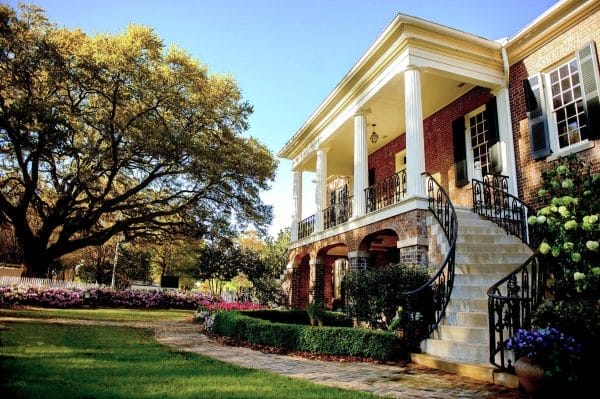 Gorgas House
One of the area’s oldest structures is the Old Tavern. Built in 1827 during Tuscaloosa’s reign as state capital, the building originally served as a tavern and hotel on a stagecoach route through town. It is now a museum that informs visitors about early Tuscaloosa commercial architecture and also serves as the headquarters for the Tuscaloosa County Preservation Society. The second oldest surviving structure in the area was built in 1828 to serve as a dining hall on the campus of the University of Alabama. Now known as the Gorgas House, it survived the Civil War and served as the home of Josiah Gorgas, a former chief of the Confederate Bureau of Ordnance and seventh president of the university. Other historic architectural attractions on the UA campus include Denny Chimes, the President’s Mansion, the Observatory, the Old Quadrangle, and Jason’s Shrine, formerly the cadet guard house. Other notable historic homes in Tuscaloosa include the Jemison-Van de Graaff Mansion, built by politician and planter Robert Jemison Jr., Historic Drish House, built in the 1830s by physician John R. Drish, and the Battle-Friedman House, built in 1835 by Alfred Battle. Both homes serve as event centers, and the Battle-Friedman House is open for tours.
Gorgas House
One of the area’s oldest structures is the Old Tavern. Built in 1827 during Tuscaloosa’s reign as state capital, the building originally served as a tavern and hotel on a stagecoach route through town. It is now a museum that informs visitors about early Tuscaloosa commercial architecture and also serves as the headquarters for the Tuscaloosa County Preservation Society. The second oldest surviving structure in the area was built in 1828 to serve as a dining hall on the campus of the University of Alabama. Now known as the Gorgas House, it survived the Civil War and served as the home of Josiah Gorgas, a former chief of the Confederate Bureau of Ordnance and seventh president of the university. Other historic architectural attractions on the UA campus include Denny Chimes, the President’s Mansion, the Observatory, the Old Quadrangle, and Jason’s Shrine, formerly the cadet guard house. Other notable historic homes in Tuscaloosa include the Jemison-Van de Graaff Mansion, built by politician and planter Robert Jemison Jr., Historic Drish House, built in the 1830s by physician John R. Drish, and the Battle-Friedman House, built in 1835 by Alfred Battle. Both homes serve as event centers, and the Battle-Friedman House is open for tours.
 Alabama Museum of Natural History
A significant number of museums, cultural sites, and sports venues also are located in the Tuscaloosa area and on the UA campus. The school’s collection includes portraits of George Washington, Thomas Jefferson, and the Marquis de Lafayette. Nearby Northport hosts the annual Kentuck Arts Festival, nationally recognized for its quality and diversity of artistic styles, ranging from folk to contemporary arts as well as traditional crafts. The University of Alabama Museums operates several facilities, most notably the Alabama Museum of Natural History, located in Smith Hall, the first building constructed on the UA campus in the twentieth century; it is one of the finest examples of Classical Revival architecture in the region. The museum features exhibits on dinosaurs and the Ice Age, among others, and houses extensive collections in the fields of geology, zoology, mineralogy, paleontology, ethnology, history, and photography. Others include the Gorgas House Museum, the Murphy-Collins House, the Paul R. Jones Museum, and the Mildred Westervelt Warner Transportation Museum. The UA campus is also home to both the Tuscaloosa Symphony Orchestra, currently housed in the Moody Music Building, and the Paul W. Bryant Museum, named for the legendary coach, with exhibits honoring Crimson Tide football players and coaches who were part of SEC and National Championship teams. In June 2019, Tuscaloosa unveiled its Civil Rights Trail, a walking tour featuring 18 locations related to the civil rights movement in the city.
Alabama Museum of Natural History
A significant number of museums, cultural sites, and sports venues also are located in the Tuscaloosa area and on the UA campus. The school’s collection includes portraits of George Washington, Thomas Jefferson, and the Marquis de Lafayette. Nearby Northport hosts the annual Kentuck Arts Festival, nationally recognized for its quality and diversity of artistic styles, ranging from folk to contemporary arts as well as traditional crafts. The University of Alabama Museums operates several facilities, most notably the Alabama Museum of Natural History, located in Smith Hall, the first building constructed on the UA campus in the twentieth century; it is one of the finest examples of Classical Revival architecture in the region. The museum features exhibits on dinosaurs and the Ice Age, among others, and houses extensive collections in the fields of geology, zoology, mineralogy, paleontology, ethnology, history, and photography. Others include the Gorgas House Museum, the Murphy-Collins House, the Paul R. Jones Museum, and the Mildred Westervelt Warner Transportation Museum. The UA campus is also home to both the Tuscaloosa Symphony Orchestra, currently housed in the Moody Music Building, and the Paul W. Bryant Museum, named for the legendary coach, with exhibits honoring Crimson Tide football players and coaches who were part of SEC and National Championship teams. In June 2019, Tuscaloosa unveiled its Civil Rights Trail, a walking tour featuring 18 locations related to the civil rights movement in the city.
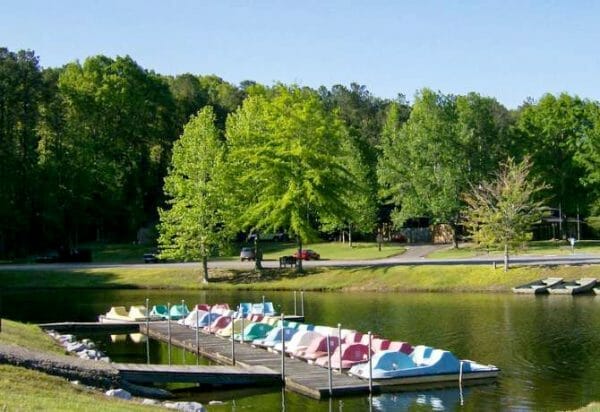 Lake Lurleen
For outdoor enthusiasts, many venues near Tuscaloosa provide opportunities for recreational activities. Most notable is Lake Lurleen State Park, named for former governor Lurleen Wallace, located approximately 10 miles from downtown. This 1,625-acre park sits on the banks of a scenic 250-acre lake and includes a modern campground, activity building, picnic area, play area, pavilions, beach with bathhouse, fishing piers, boat rentals, and boat-launch areas. The Tuscaloosa County Park and Recreation Authority operates 31 small parks in the area, including Capitol Park in the city of Tuscaloosa, which features the ruins of the old State Capitol building.
Lake Lurleen
For outdoor enthusiasts, many venues near Tuscaloosa provide opportunities for recreational activities. Most notable is Lake Lurleen State Park, named for former governor Lurleen Wallace, located approximately 10 miles from downtown. This 1,625-acre park sits on the banks of a scenic 250-acre lake and includes a modern campground, activity building, picnic area, play area, pavilions, beach with bathhouse, fishing piers, boat rentals, and boat-launch areas. The Tuscaloosa County Park and Recreation Authority operates 31 small parks in the area, including Capitol Park in the city of Tuscaloosa, which features the ruins of the old State Capitol building.
Further Reading
- Lewis, Herbert James. Lost Capitals of Alabama. Charleston, SC.: The History Press, 2014.
- The Heritage of Tuscaloosa County, Alabama. Clanton, Ala.: Heritage Publishing Consultants, 1999.
External Links
- City of Tuscaloosa
- Tuscaloosa County
- Tuscaloosa City Schools
- Tuscaloosa Tourism & Sports Commission
- Chamber of Commerce of West Alabama
- Alabama Legacy Moments: Tuscaloosa, The Second State Capital
- Historic Tuscaloosa
- Encycylopedia of Southern Jewish Communities
- University of Alabama
- Stillman College
- Paul W. Bryant Museum



